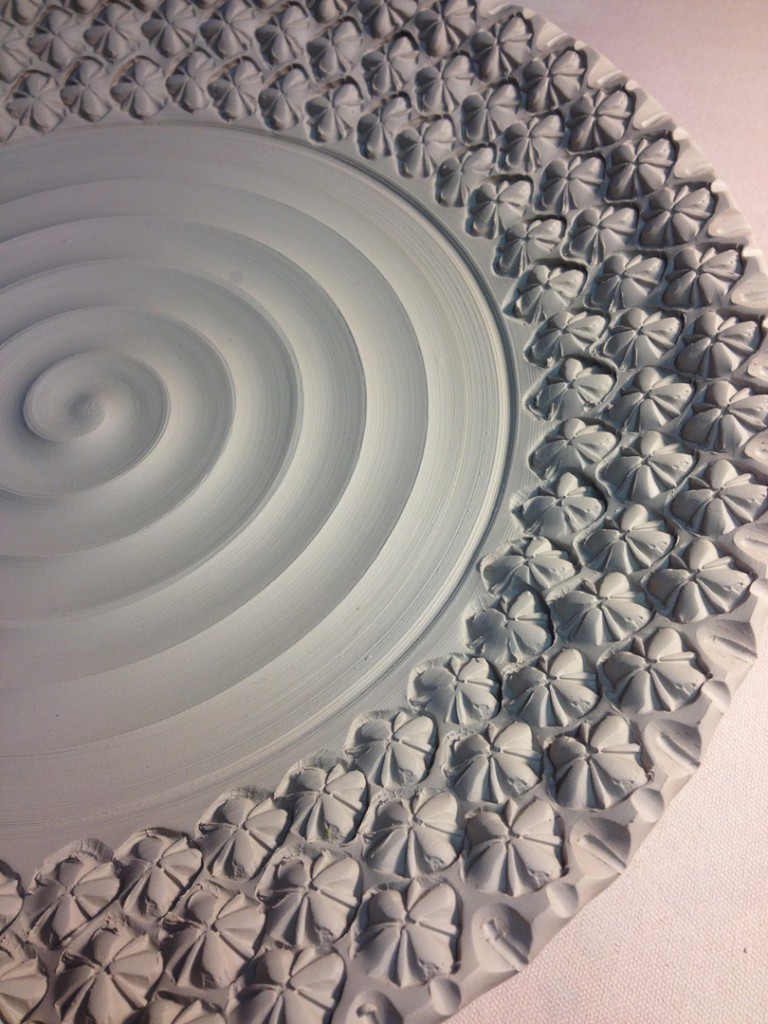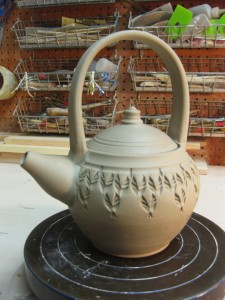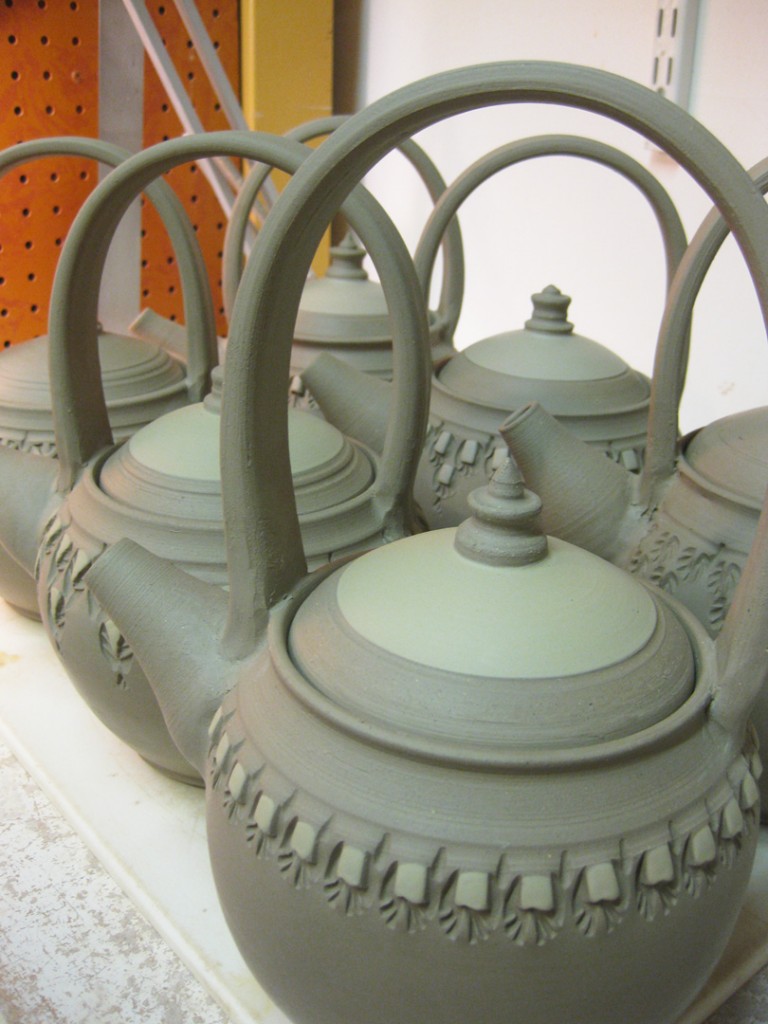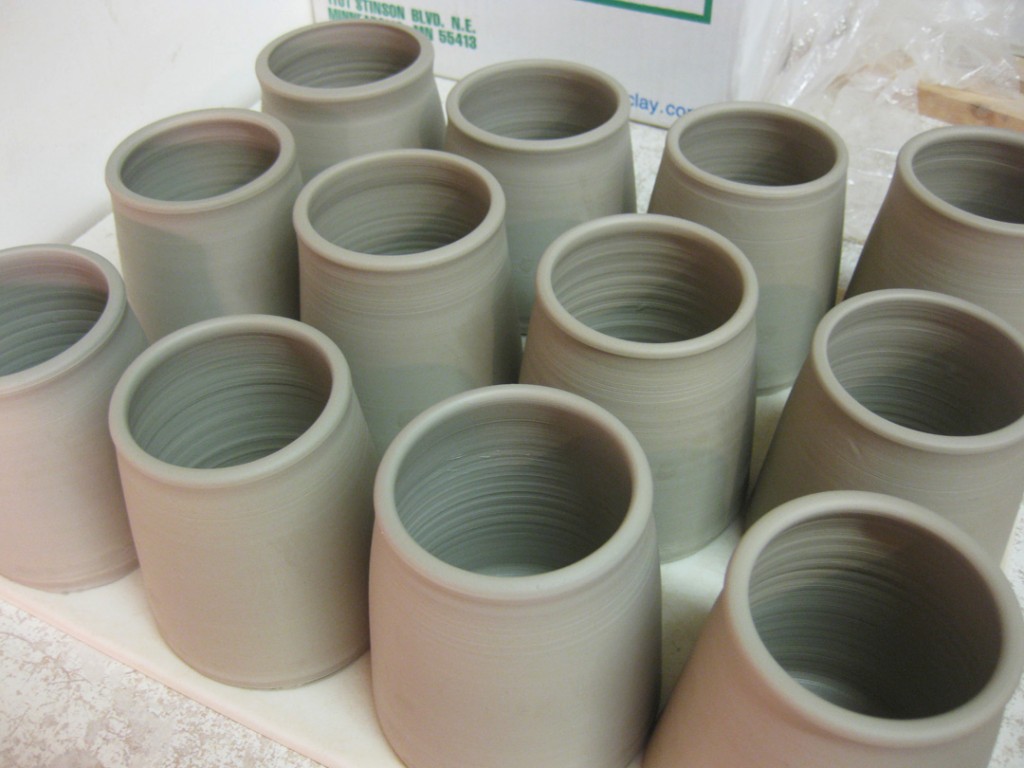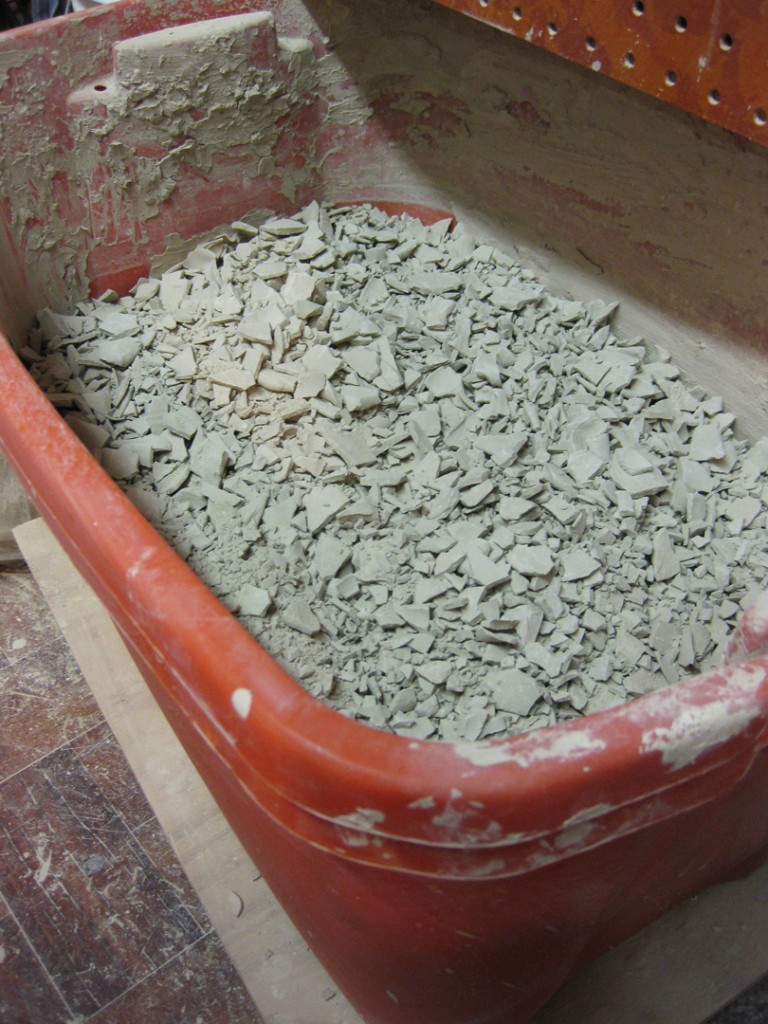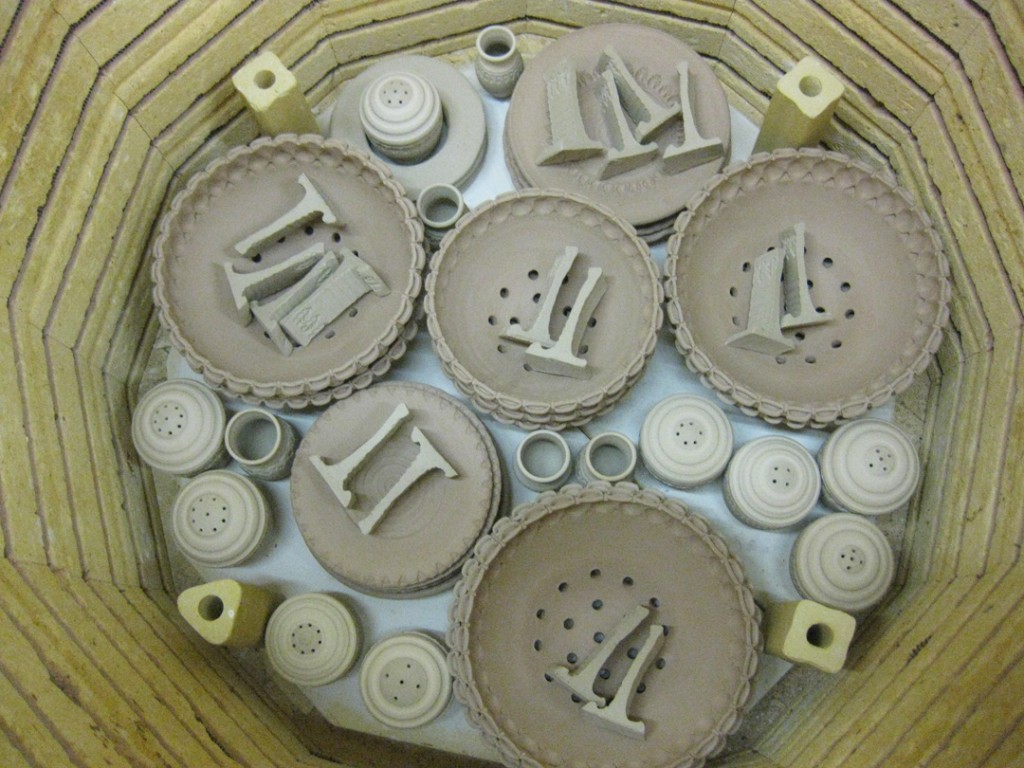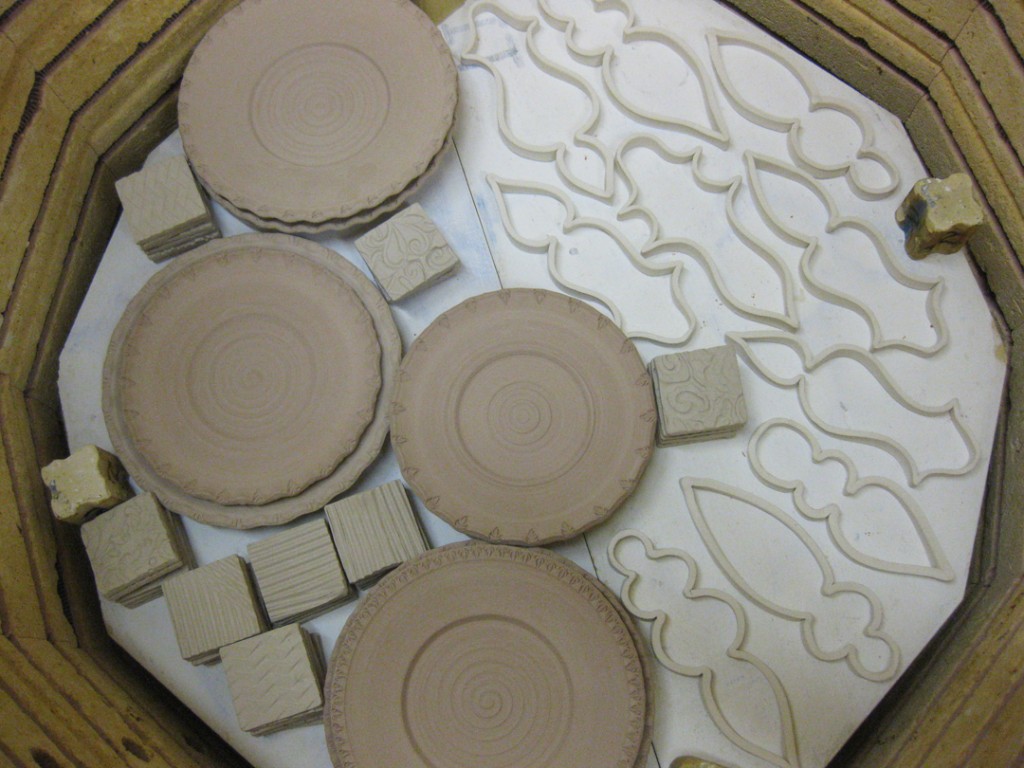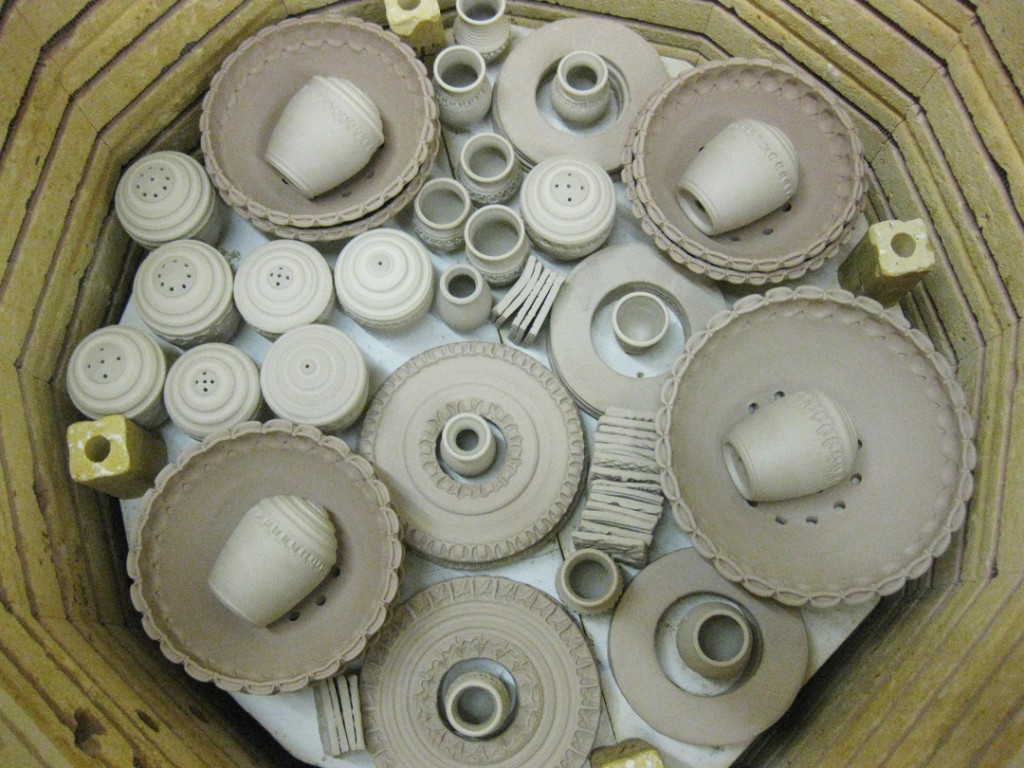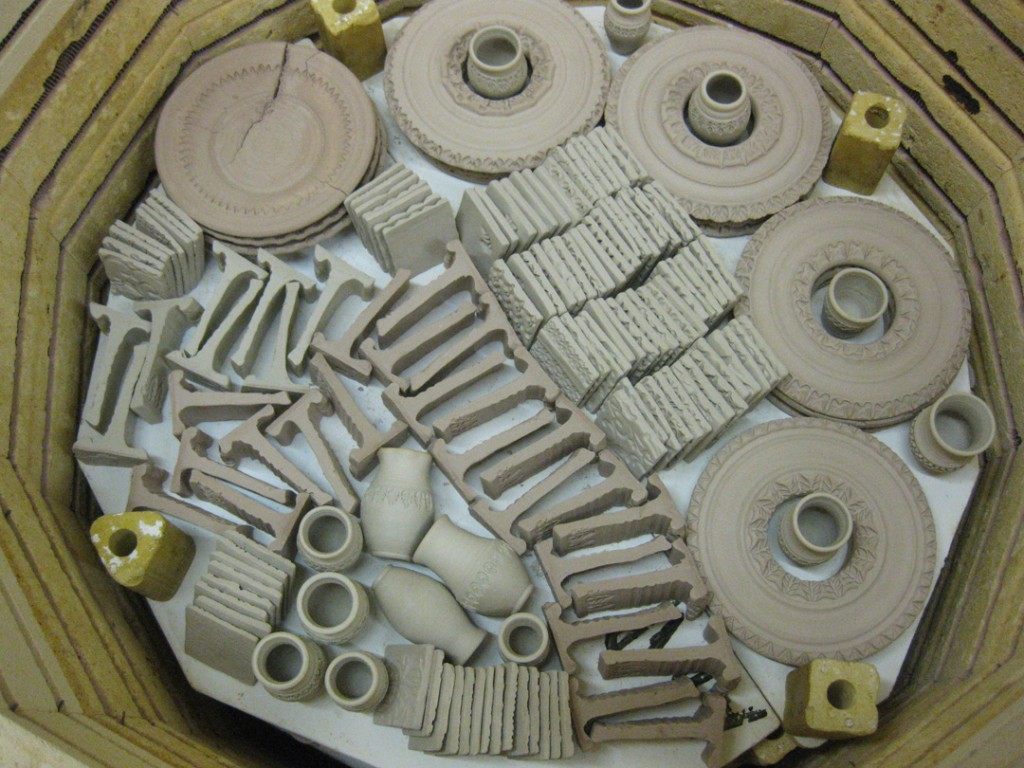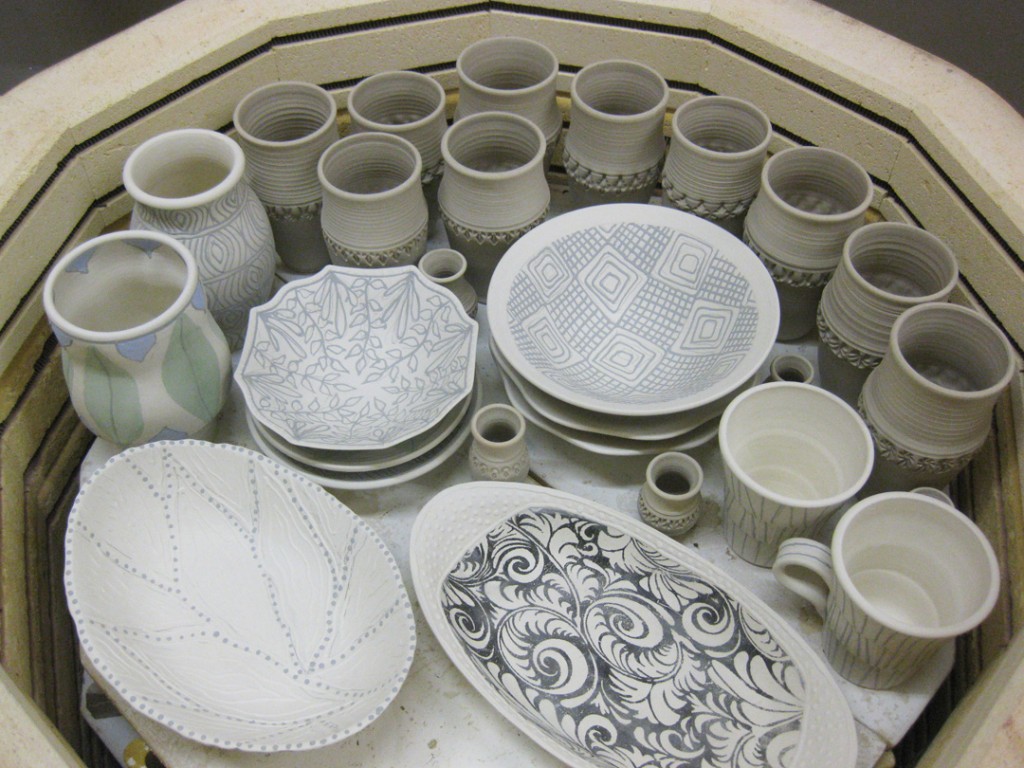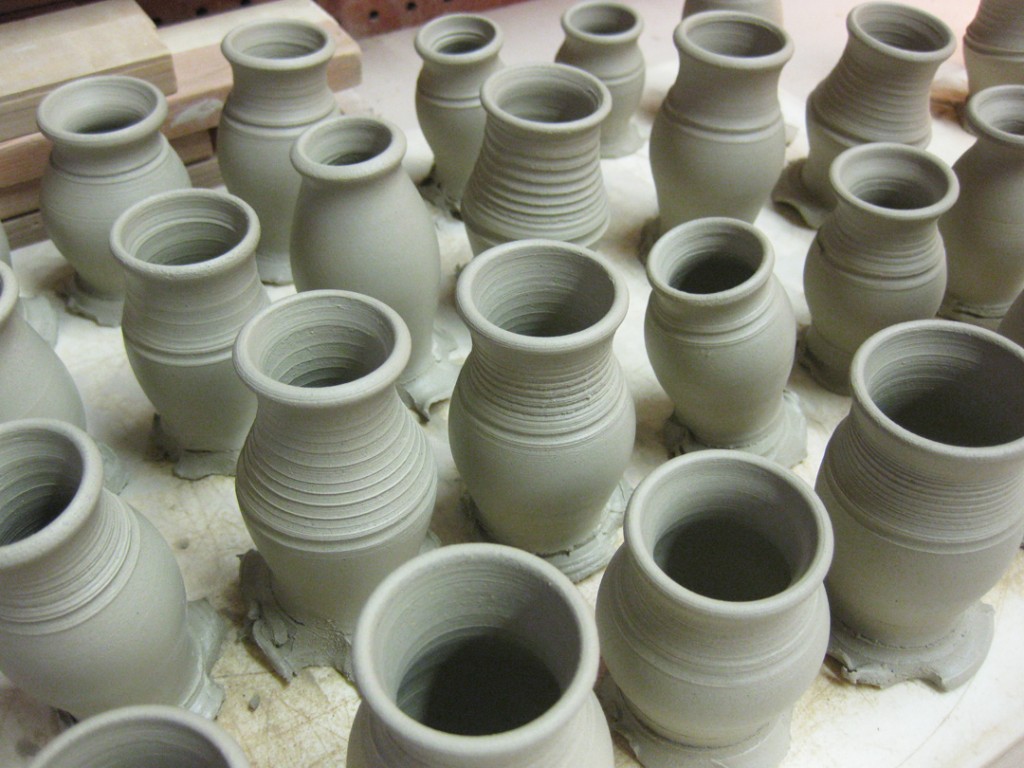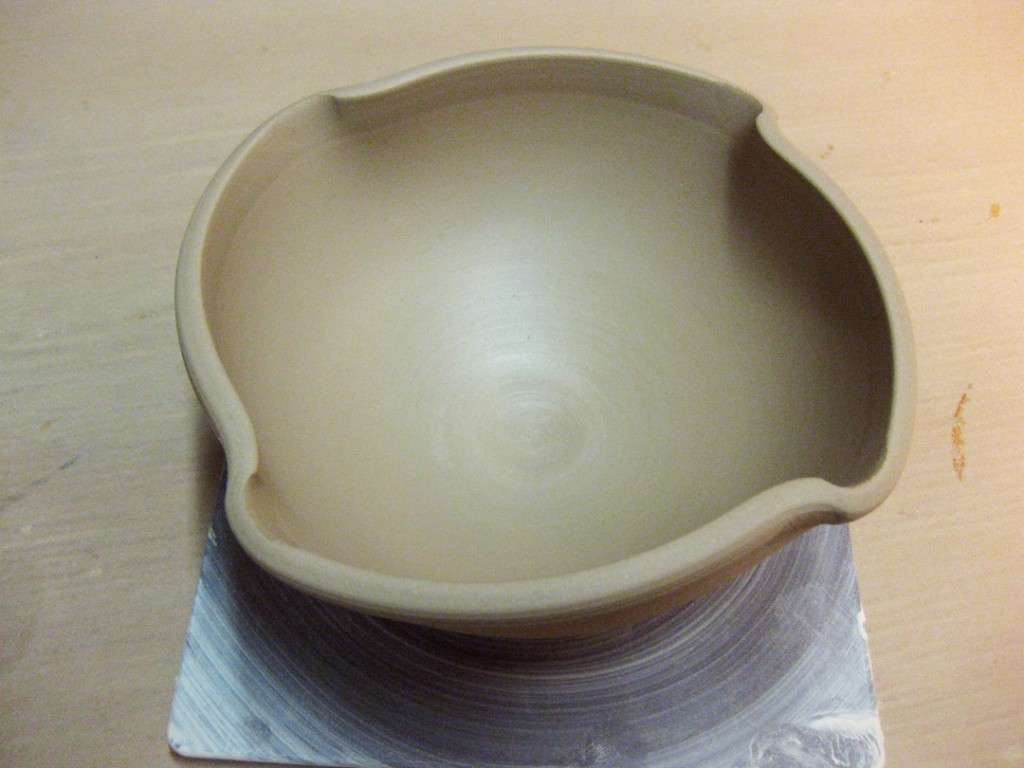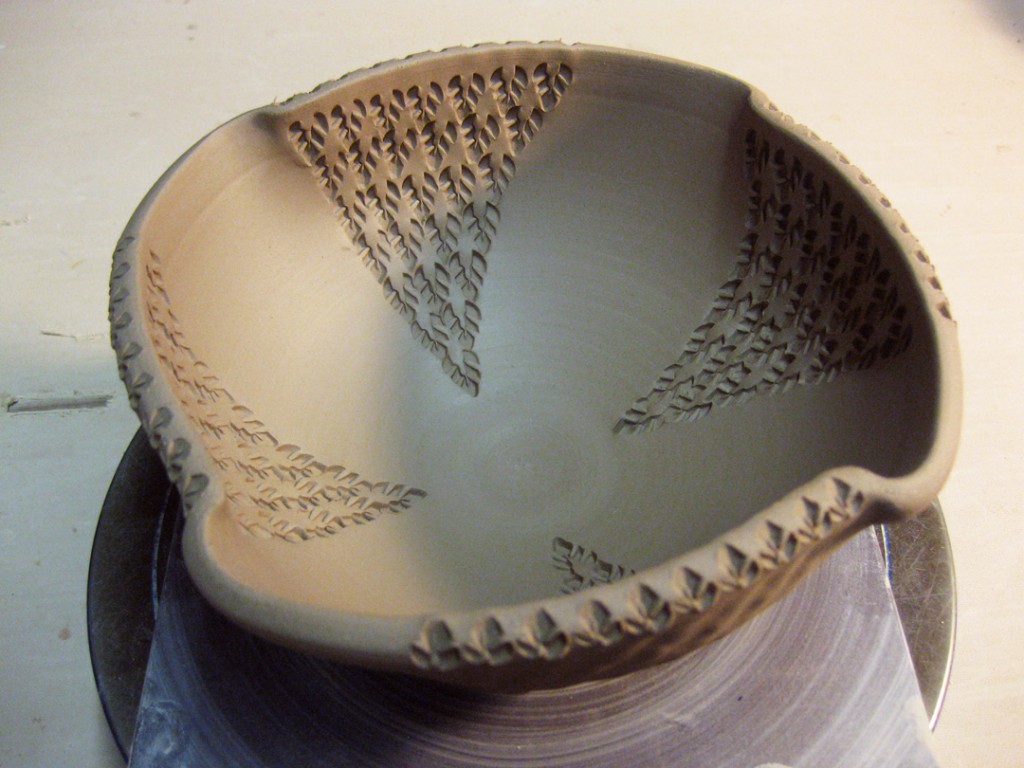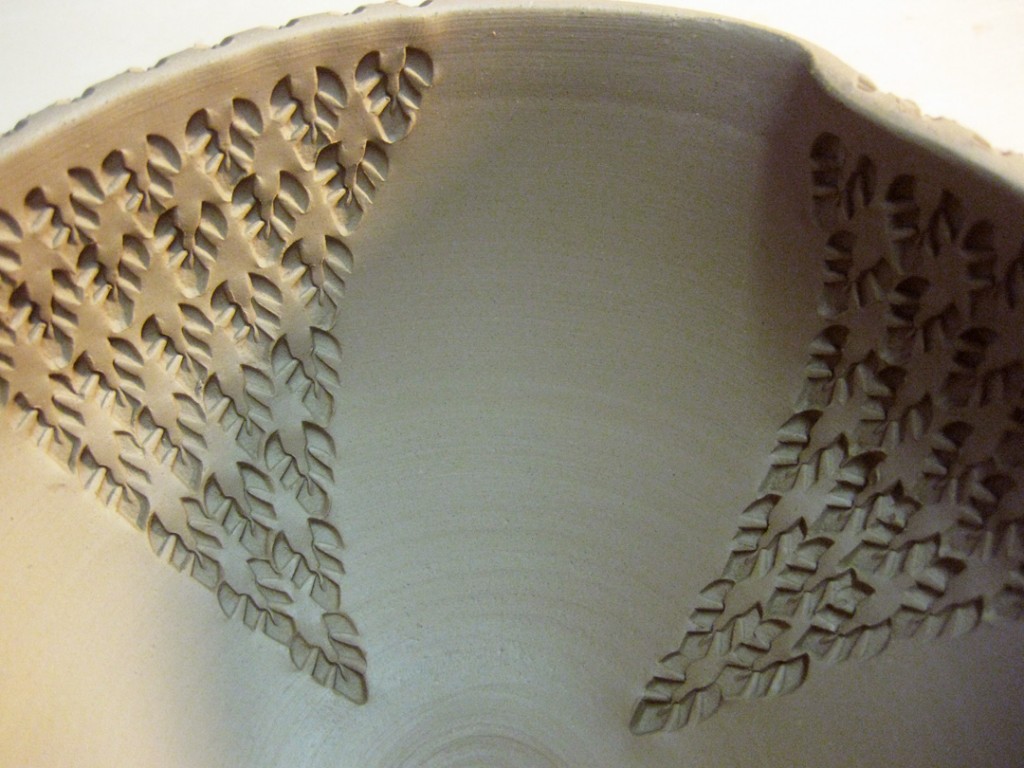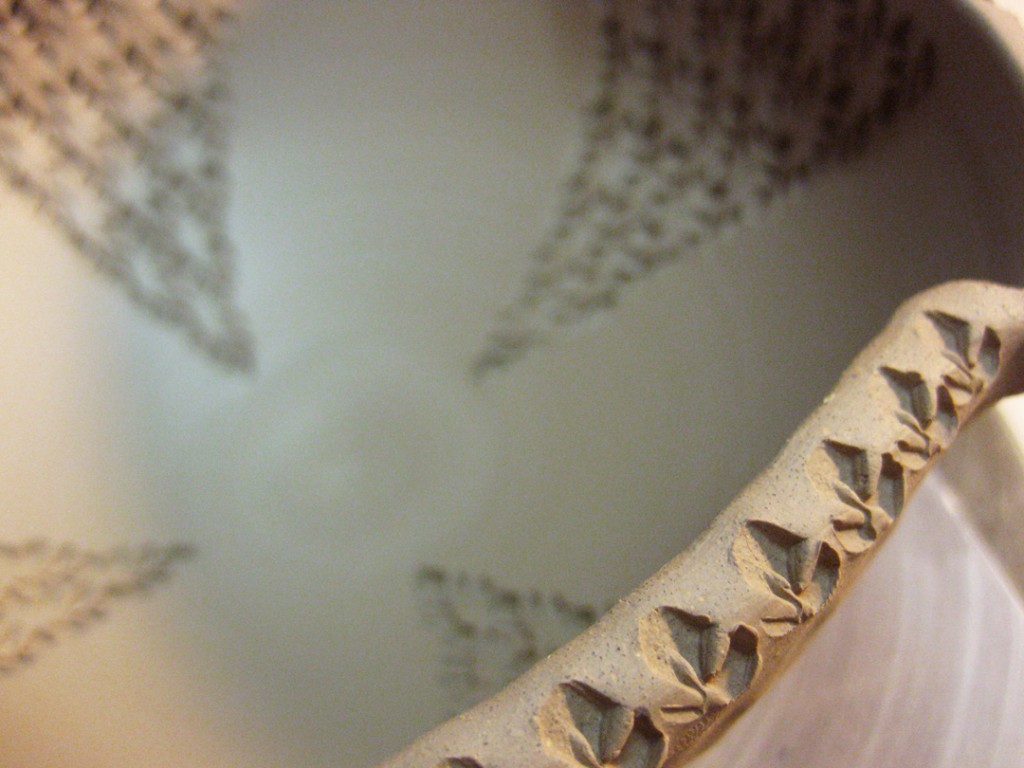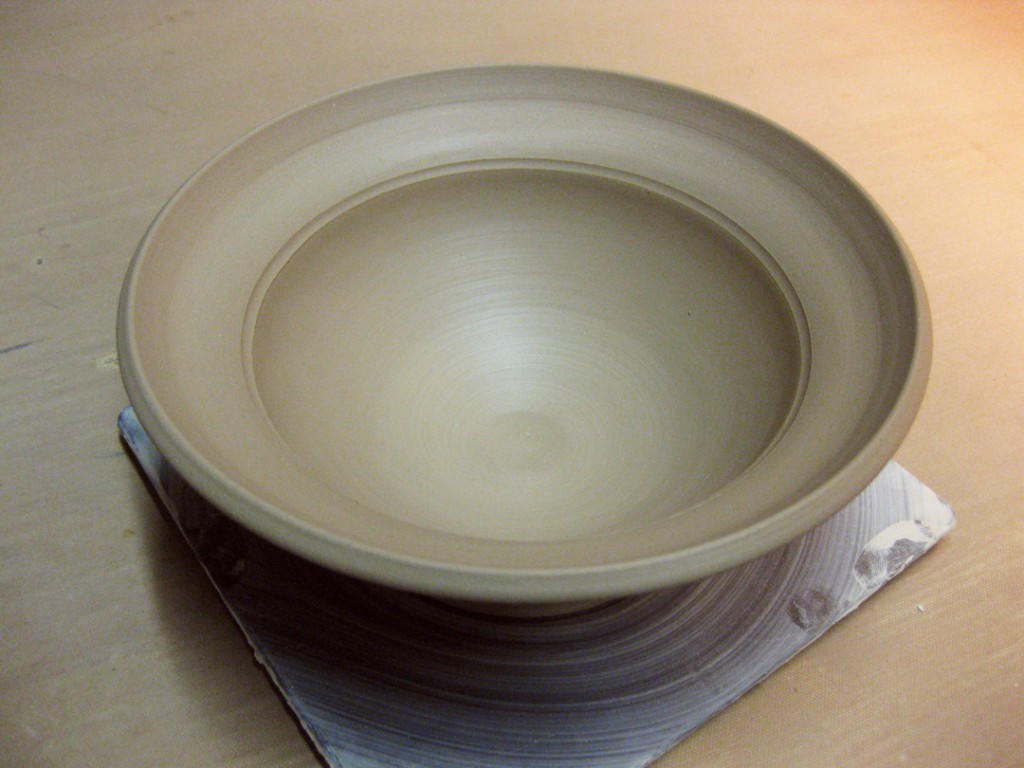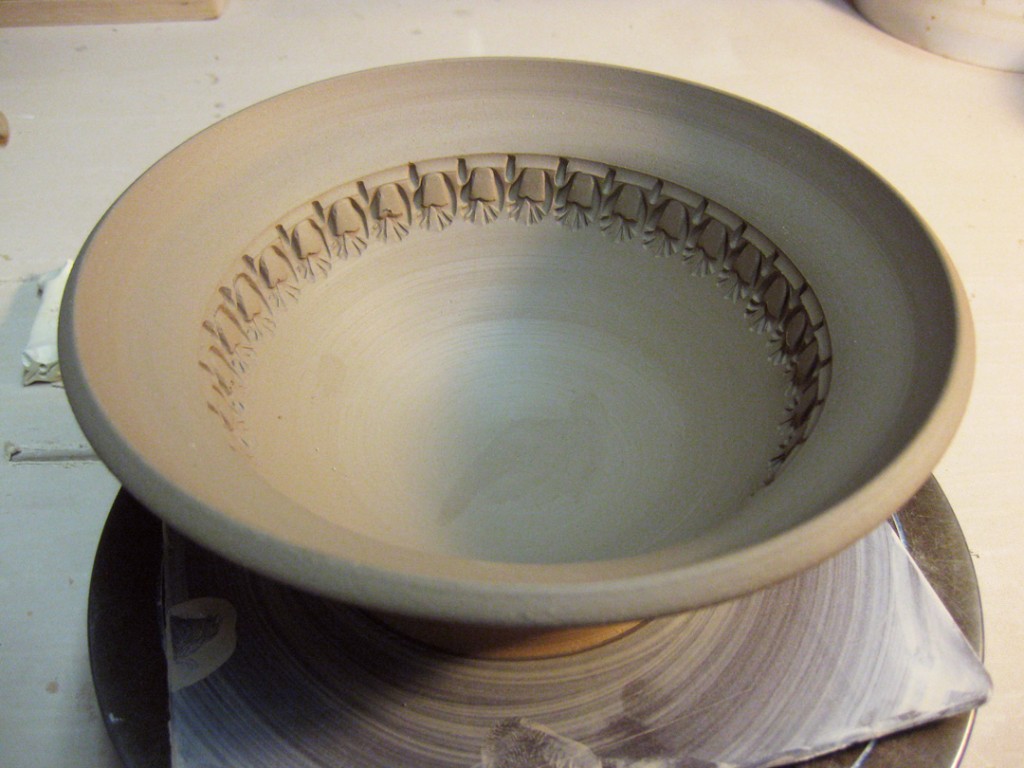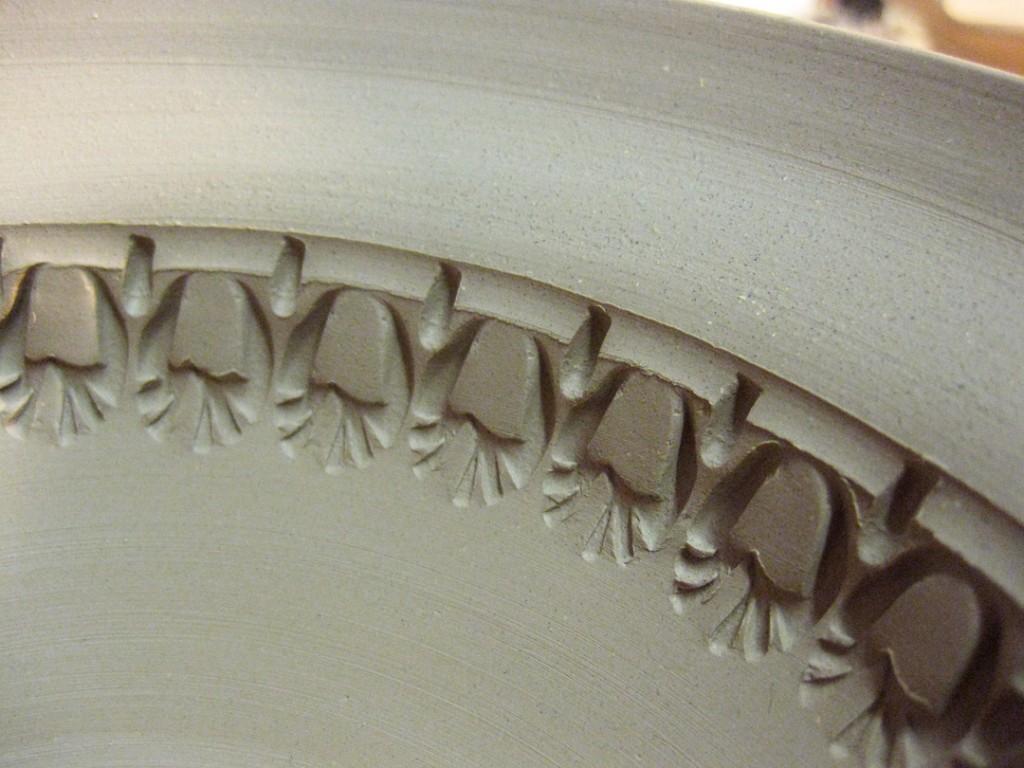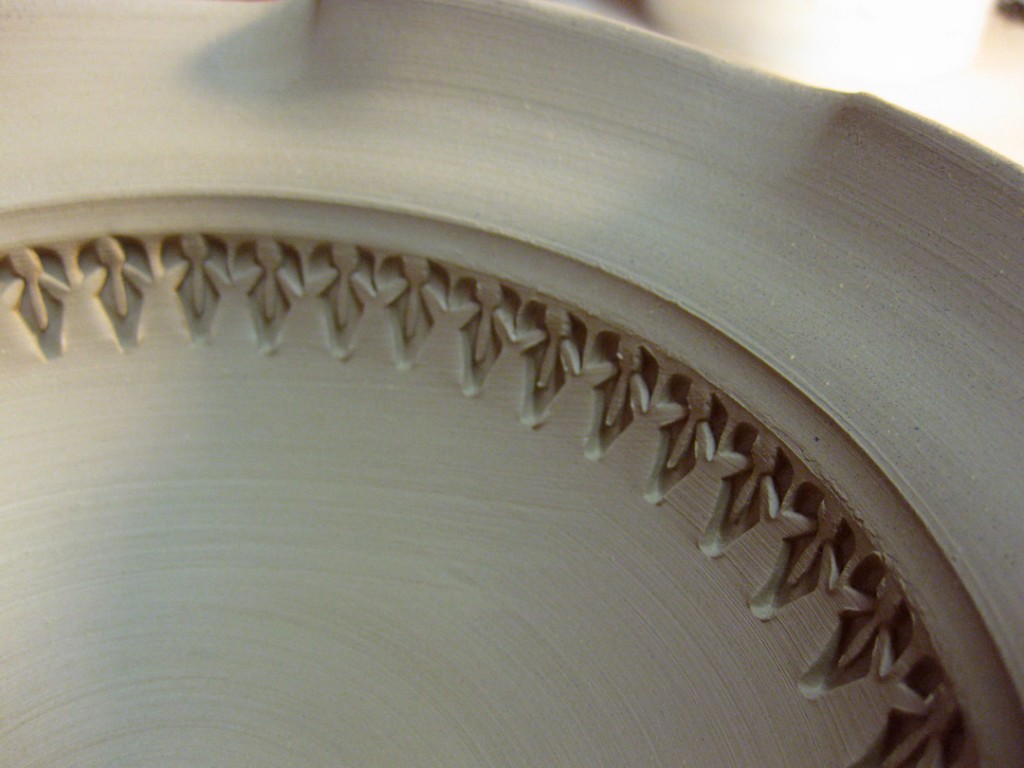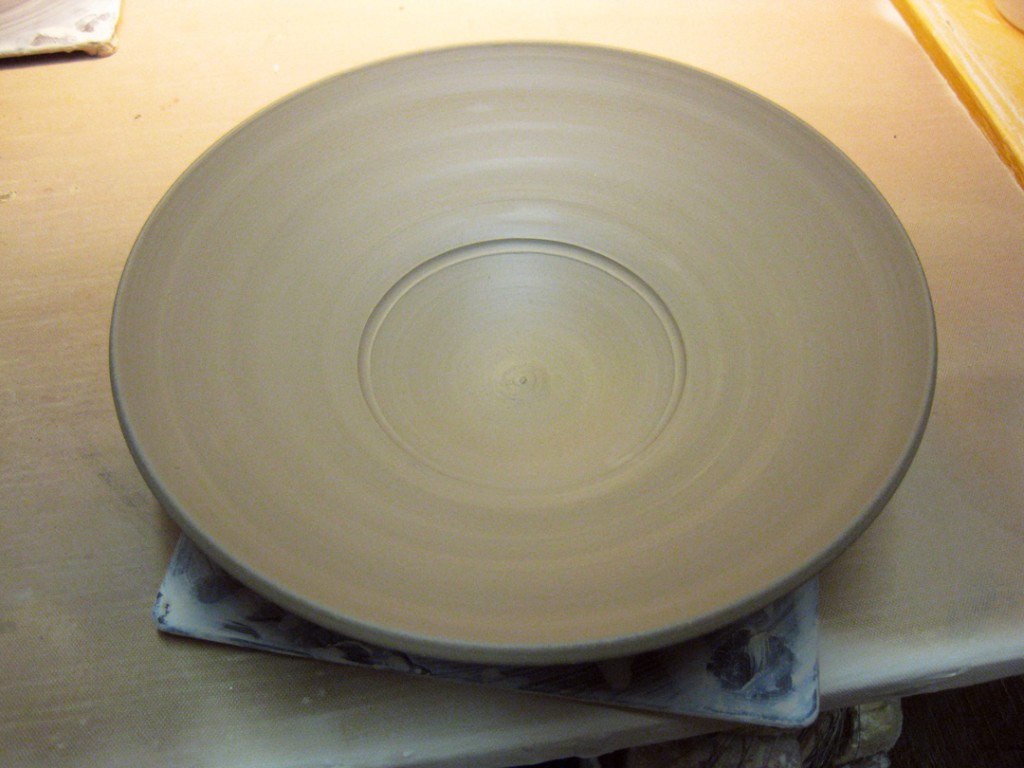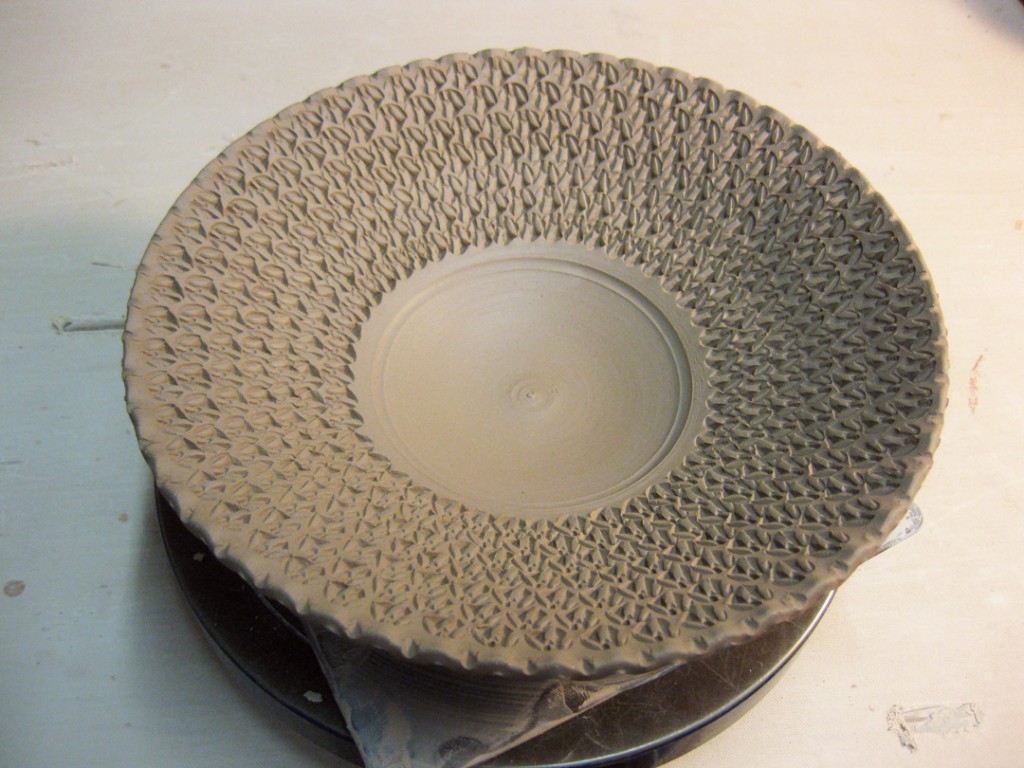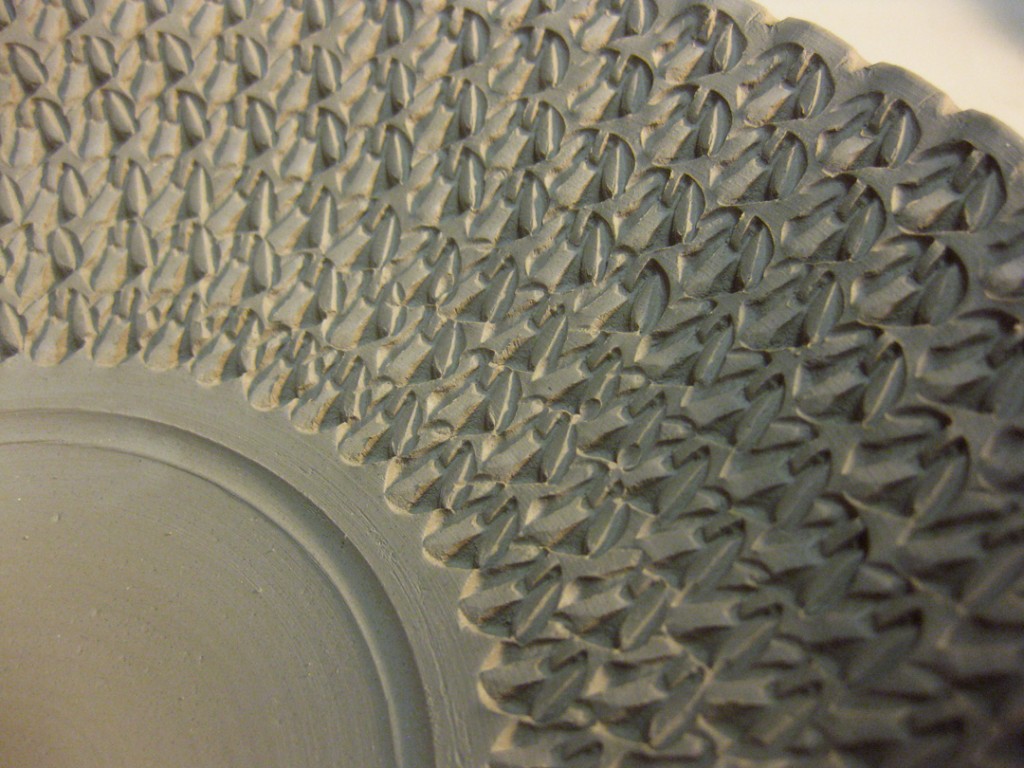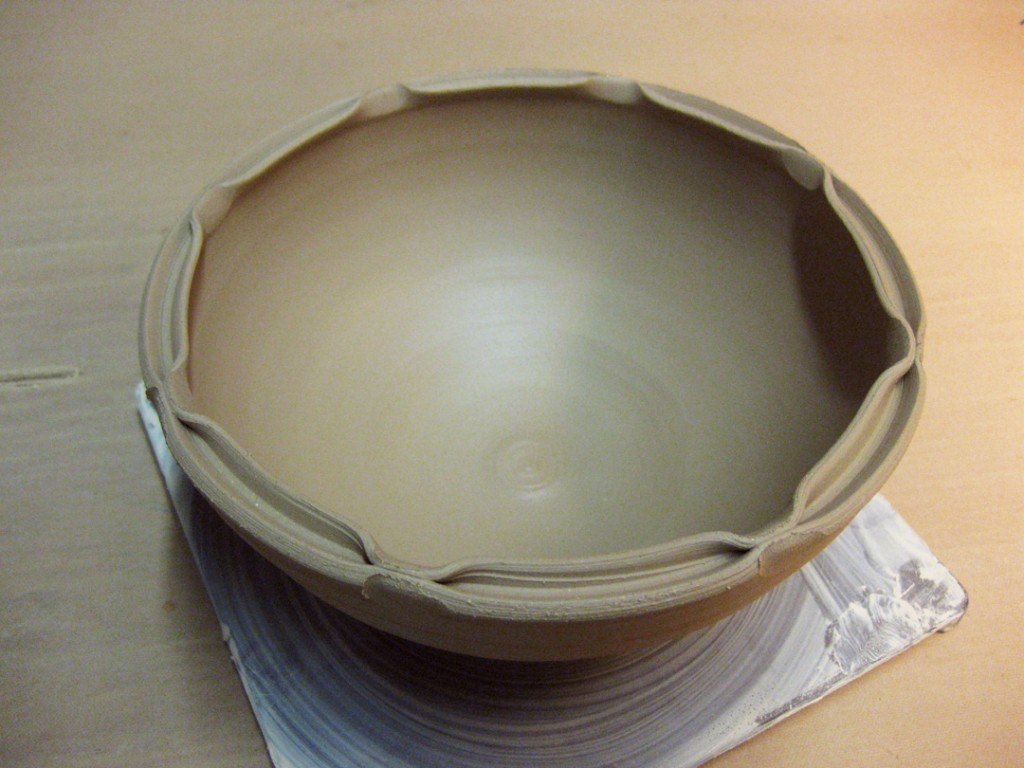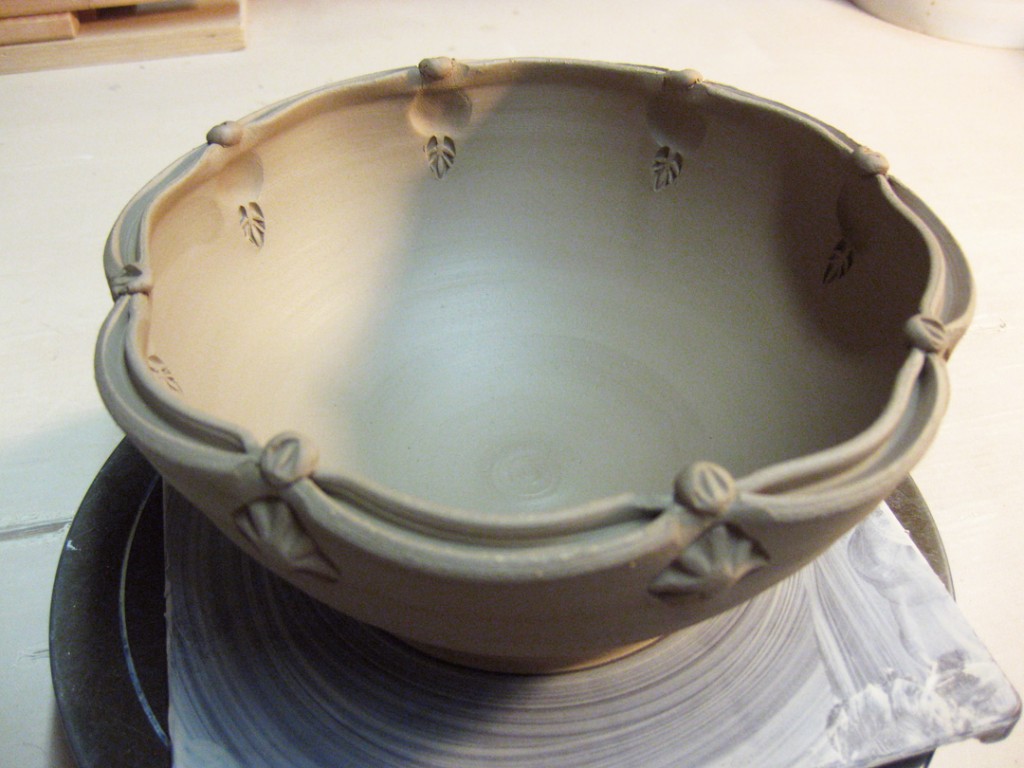It’s been a little while since my last video… so I decided it’s about time!!!
This platter was made with B-Clay, and was a little bit softer than I would normally like for stamping. But with my busy schedule this week, I knew that I had limited time in the studio. So… go for it now?… or wait and run the chance of it drying up too much?
Of course I decided to go for it!!!
You just need to be a bit more careful, use more even pressure on both sides…
and hope that the stamp doesn’t “stick” when it gets a little damp.
Click here for my latest Platter Stamping Demo on YouTube.
And here’s the set of tools that did all of the work…
one handmade stamp, two wooden tools and a thin sgraffito loop tool.
Click here for my latest Platter Stamping Demo on YouTube.


